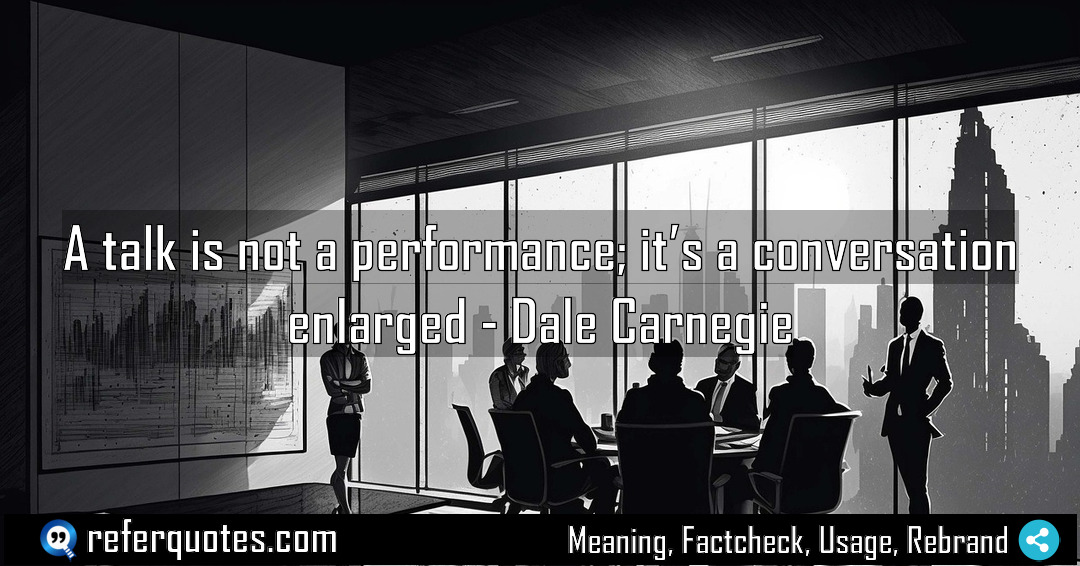You know, “A talk is not a performance; it’s a conversation enlarged” completely reframes public speaking. It’s not about putting on a show for a passive audience. Instead, it’s about scaling up that natural, engaging dynamic you have when you’re just talking one-on-one with someone. This shift in mindset is a total game-changer for anyone who gets nervous in front of a crowd.
Share Image Quote:Table of Contents
Meaning
At its heart, this quote is about connection over perfection. It tells you to stop performing and start relating.
Explanation
Let me break this down from my own experience. When you think of a “performance,” what comes to mind? A script. A stage. A clear separation between the actor and the audience. That’s where the fear comes from—the pressure to be flawless, to remember every line perfectly.
But a “conversation enlarged”? That’s different. Think about the last great chat you had over coffee. You were present. You listened. You responded naturally. You weren’t worried about the “right” thing to say next. Carnegie’s genius was in realizing that effective speaking is just that same energy, but projected to a larger group. You’re not delivering a monologue; you’re guiding a dialogue, even if you’re the only one talking for a while. It’s about making everyone in that room feel like you’re speaking directly to them.
Quote Summary
| Context | Attributes |
|---|---|
| Original Language | English (4154) |
| Category | Skill (471) |
| Topics | authenticity (123), dialogue (14), speaking (2) |
| Literary Style | conversational (18), minimalist (508) |
| Emotion / Mood | general (87), relaxed (19) |
| Overall Quote Score | 86 (328) |
Origin & Factcheck
This is straight from Dale Carnegie’s 1962 book, The Quick and Easy Way to Effective Speaking, which was published in the United States. You sometimes see this sentiment floating around attributed to other communication gurus, but the core idea and this specific phrasing are authentically Carnegie.
Attribution Summary
| Context | Attributes |
|---|---|
| Author | Dale Carnegie (790) |
| Source Type | Book (4767) |
| Source/Book Name | The Quick and Easy Way to Effective Speaking (71) |
| Origin Timeperiod | Modern (909) |
| Original Language | English (4154) |
| Authenticity | Verified (4767) |
Author Bio
Dale Carnegie(1888), an American writer received worldwide recognition for his influential books on relationship, leadership, and public speaking. His books and courses focus on human relations, and self confidence as the foundation for success. Among his timeless classics, the Dale Carnegie book list includes How to Win Friends and Influence People is the most influential which inspires millions even today for professional growth.
Official Website |Facebook | X | Instagram | YouTube |
Where is this quotation located?
| Quotation | A talk is not a performance; it’s a conversation enlarged |
| Book Details | Publication Year/Date: 1962 (first publication, posthumous course-based text) ISBN/Unique Identifier: 9780671724009 (common Pocket/Simon & Schuster reprint) Last edition. Number of pages: Common reprints ~240–300 pages (varies by printing) |
| Where is it? | Chapter: The Speaker’s Attitude, Approximate page from 1962 edition |
